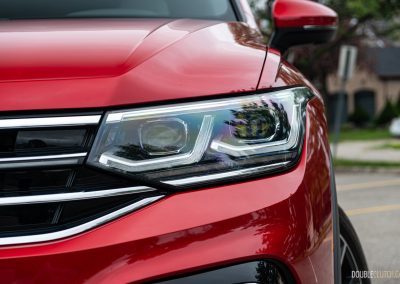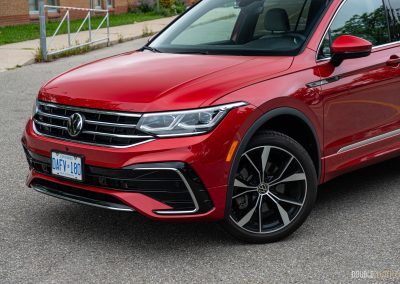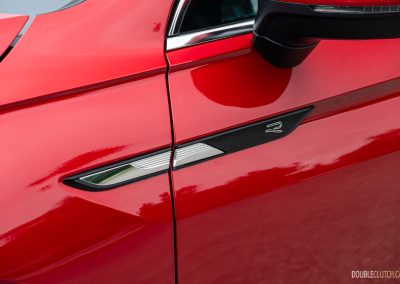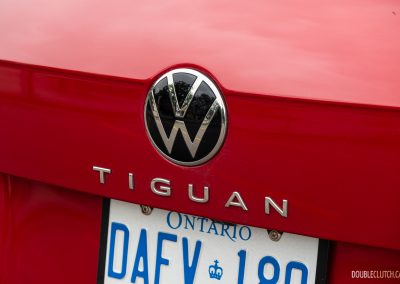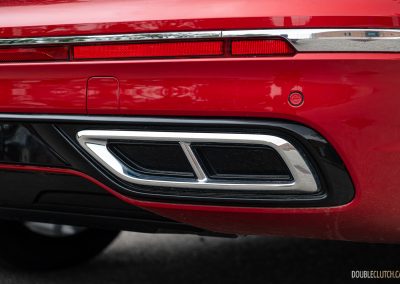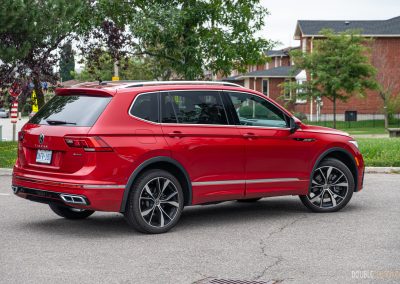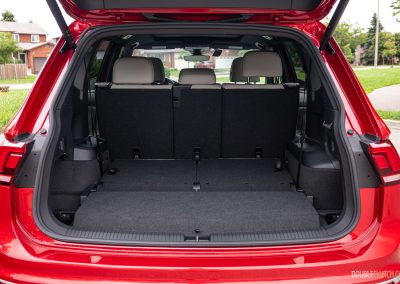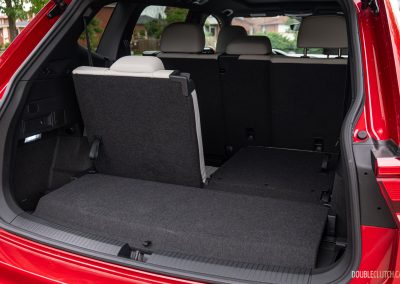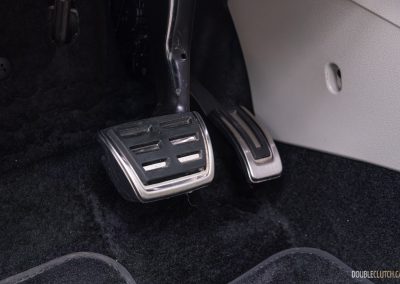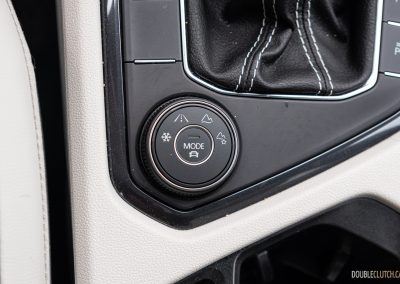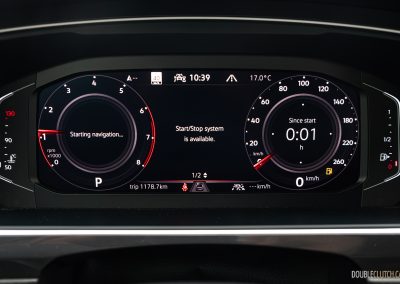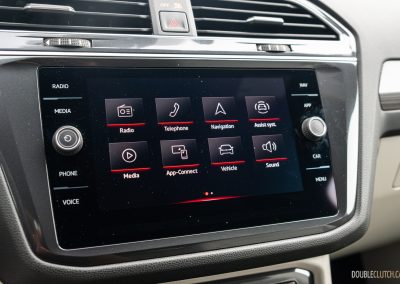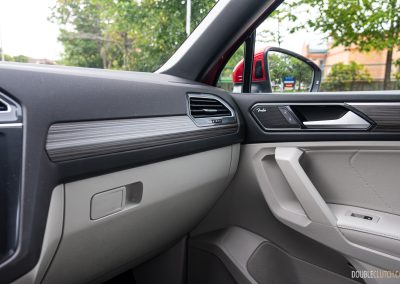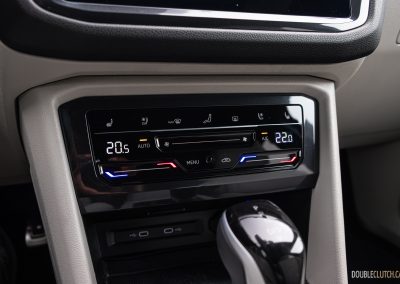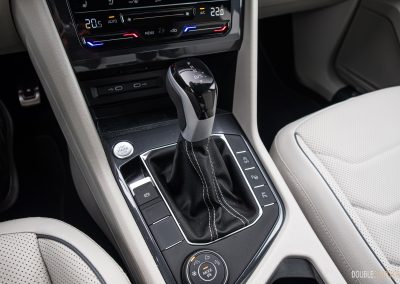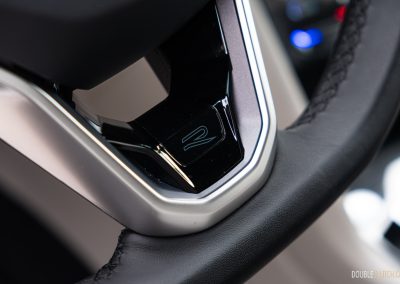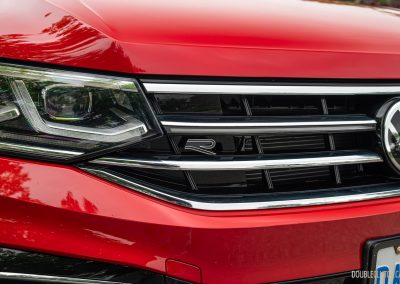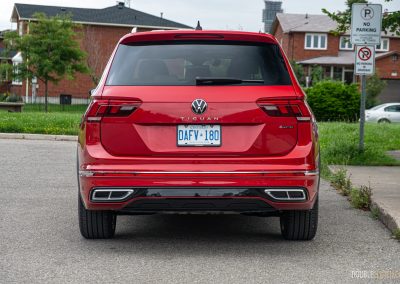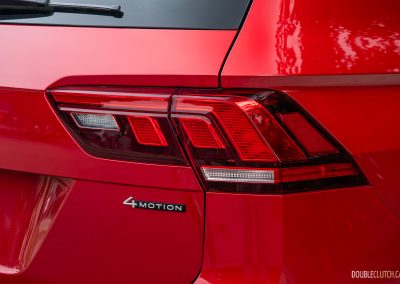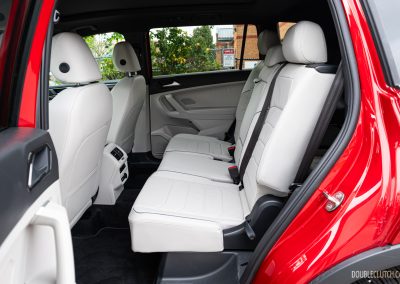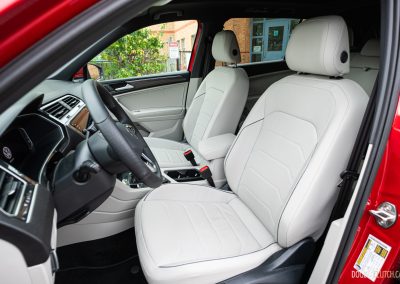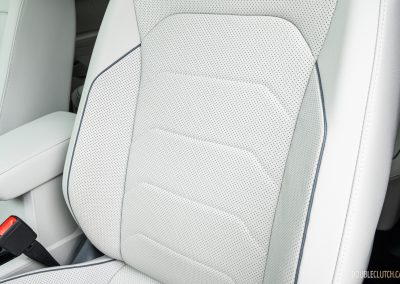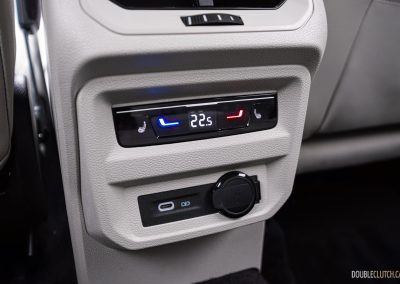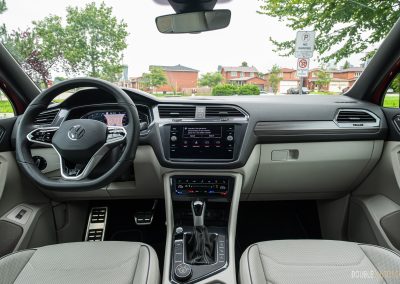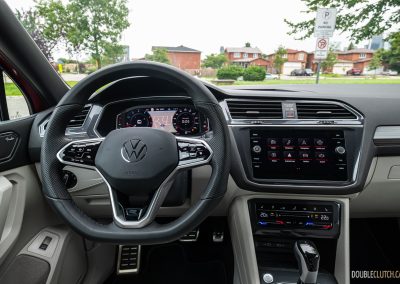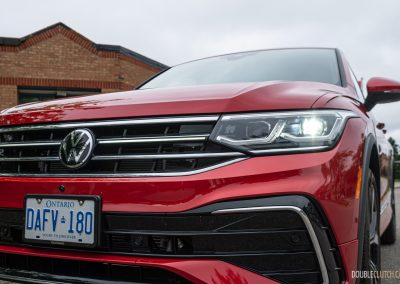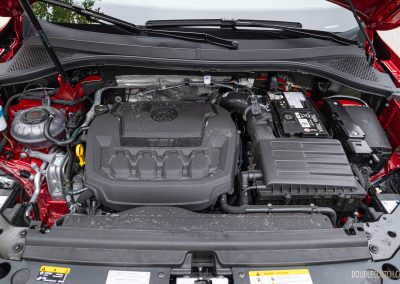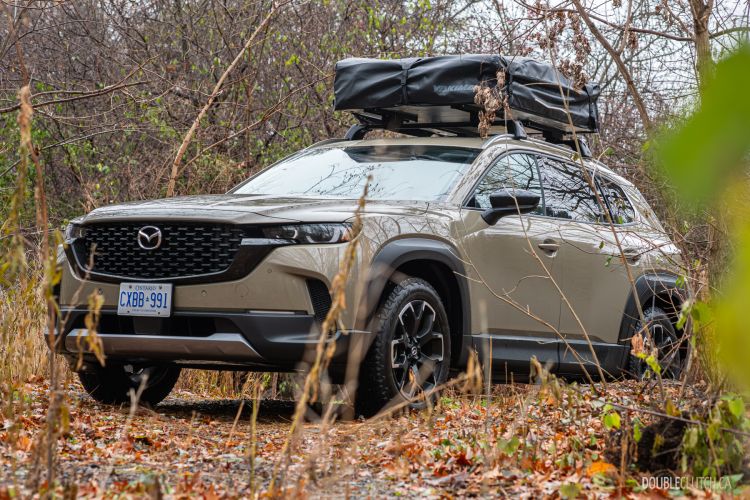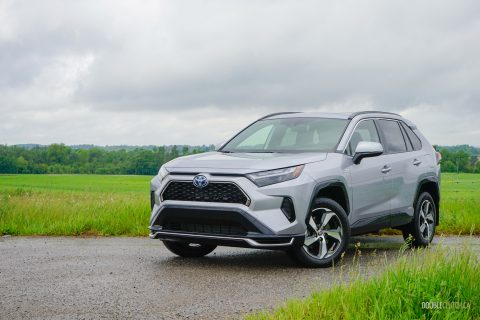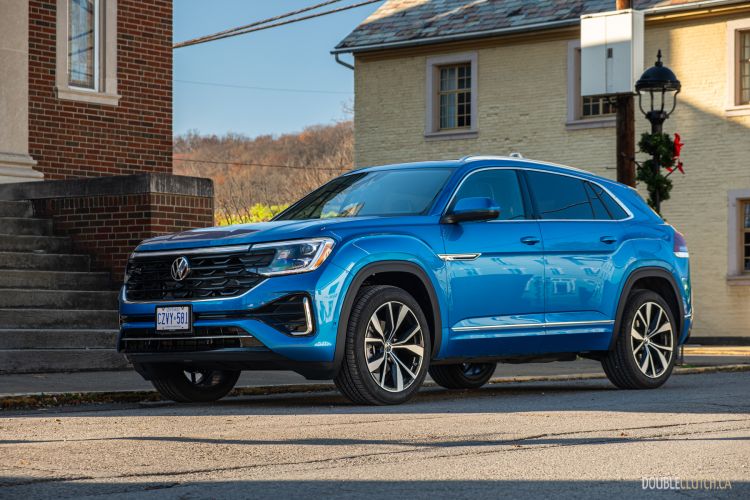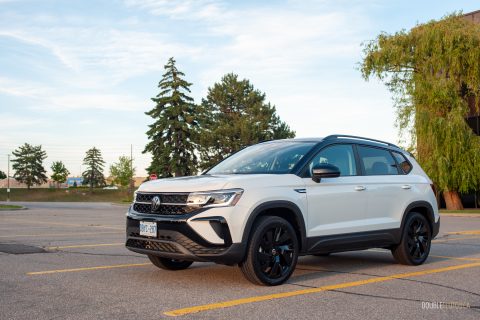‘R’ is the most powerful letter in the automotive world. From legends like the Skyline GT-R, the Civic Type R, and Audi’s RS lineup, to newcomers like Toyota’s GR cars, all these R-designated models are usually hopped-up versions of more mundane models. Volkswagen even does this themselves with the Golf R, and even the 2024 Volkswagen Tiguan R-Line — except with their compact crossover, they forgot to add the actual R stuff.
But there’s a significant distinction here: R-Line is essentially a cosmetic package, though some might call it a fake R. Volkswagen sells a real Tiguan R in Europe, featuring the same mechanical bits as the Golf R, but not this one. The Tiguan R-Line is propelled by a 2.0-litre turbocharged four-cylinder engine, producing a low-ish 184 horsepower at 6,000 rpm, and 221 pound-feet of torque at 1,600 rpm. For an all-wheel-drive crossover that seats seven people in a pinch, weighs 3,800 pounds, 184 ponies doesn’t produce much forward thrust.

Sadly, there’s more than just a lack of power that creates a less-than-ideal driving experience here. The Tiguan’s eight-speed automatic transmission often gets confused, and will delay a downshift more often than not. On top of that, there’s turbo and throttle lag, so when that trifecta is all working together, it sometimes makes for a sticky situation. It reminds me of the Taos Highline, but I learned from that experience: this time around, whenever I wanted to move over into a faster lane, I’d floor it in my current lane, knowing by the time I moved over, the Tiguan would finally give me the passing power I wanted. For someone who isn’t familiar with this trait, it can be unnerving at first, although I’m sure most owners will eventually get used to it.
If you keep out of the left lane, the Tiguan R-Line is otherwise a capable cruiser. It’s relatively quiet around town and mitigates most road imperfections rather well, even if the thump of a bump [I’m stealing that. —Ed.] echoes a little too much through the cabin. Steering is light and accurate but doesn’t feel overboosted, though the brakes felt weak. Coupled with the soft-ish suspension, the Tiguan didn’t inspire much confidence during an unexpected panic stop.
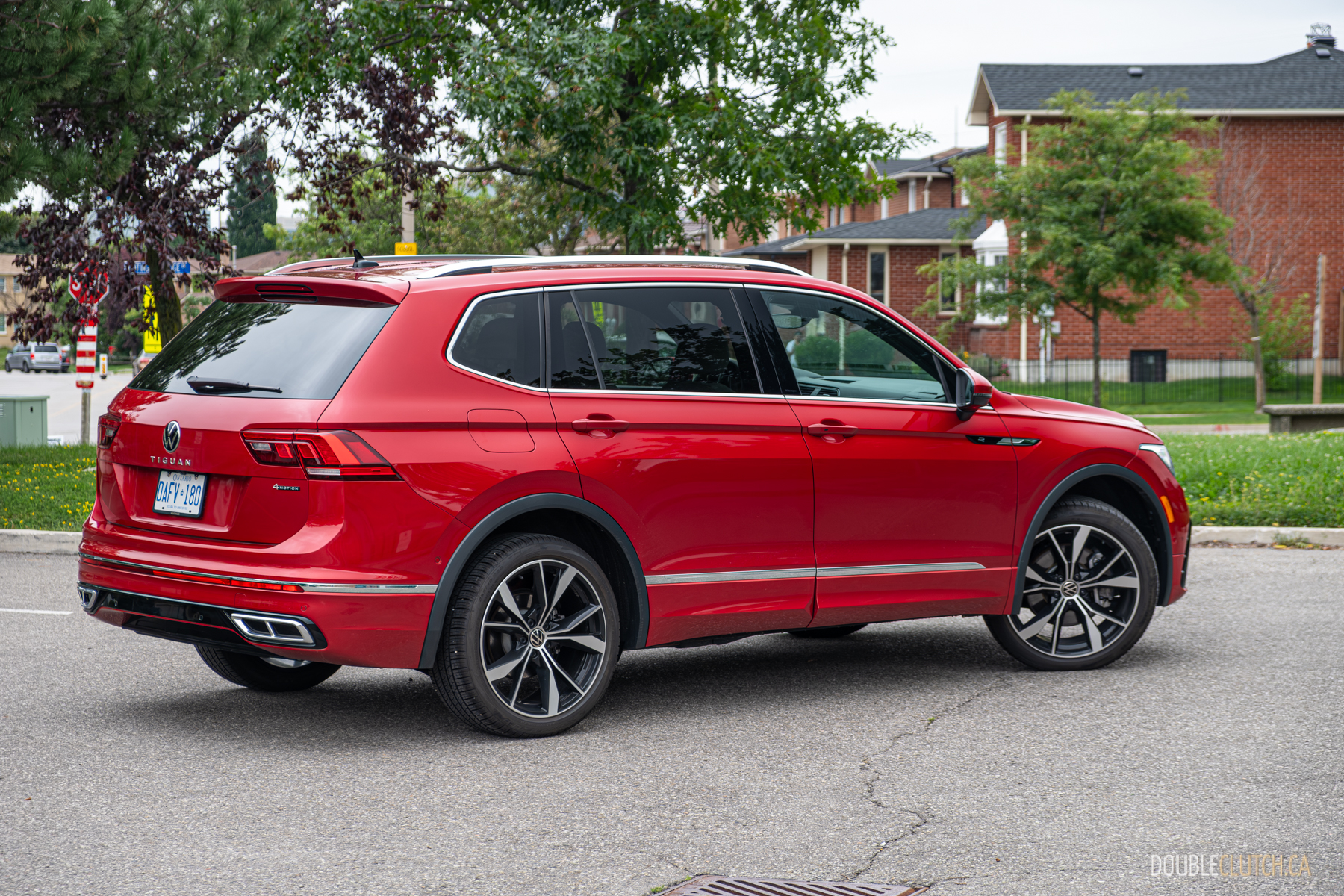
Powetrain aside, the Tiguan R-Line is one of the most attractive crossovers in its class, at least to me. Our tester’s Kings Red Metallic paint looked stunning, and there’s a lot of Audi in its overall proportions and sqaured-off edges. Its sharp LED lighting all around helps further that premium, sharp look, coming across as much more upscale than its price tag suggests.
It also avoids any ‘du jour’ styling trends, like big grilles and creases everywhere; despite this generation having debuted in 2019, it’s aged well and will continue to do so. The R-Line specifically adds tasteful accents like subtle badging, a different grille with a light bar, more aggressive bumpers, and 20-inch wheels that tie everything together quite well.
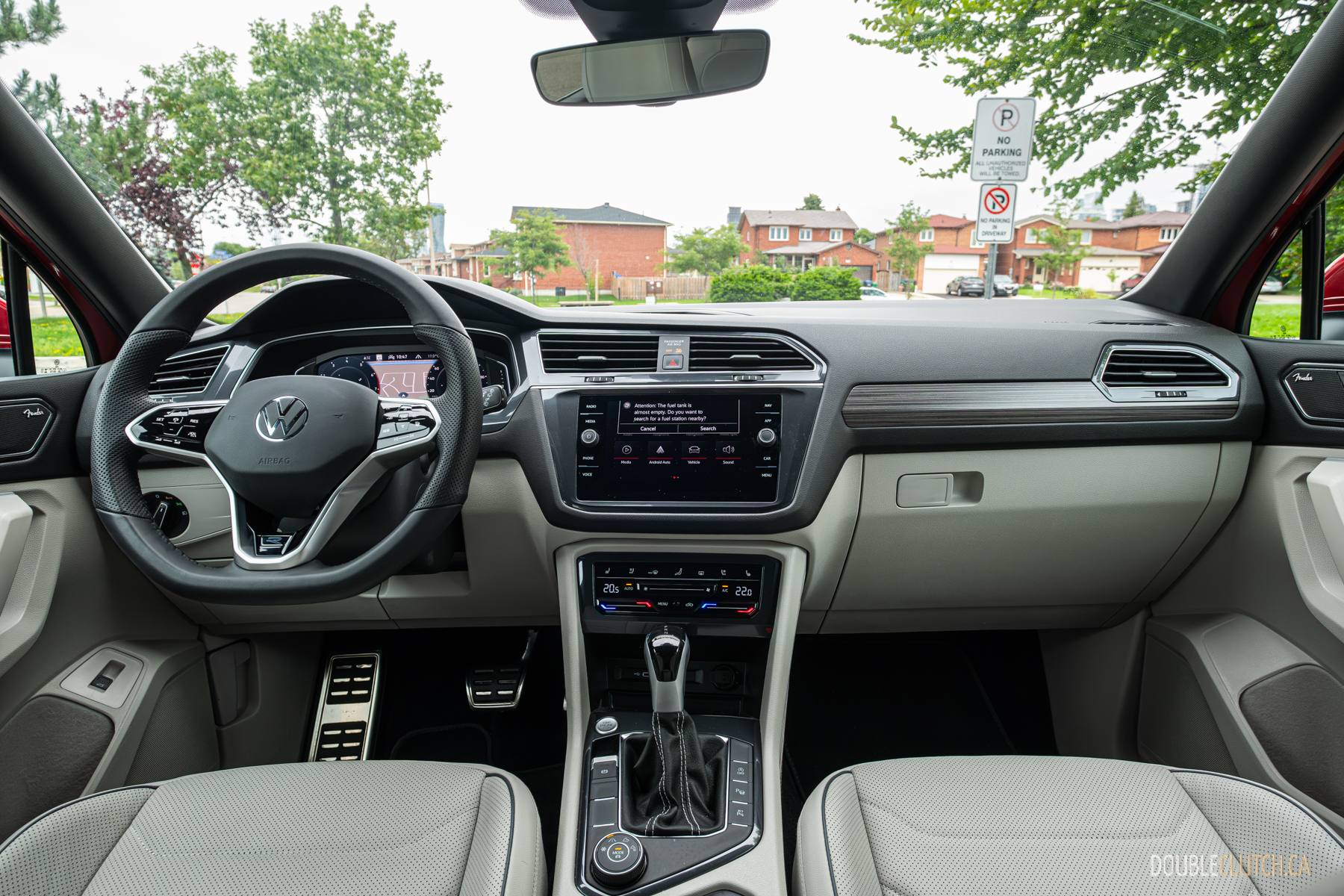
There isn’t anything R-specific inside, aside from aluminum door sills and pedals, and a meatier steering wheel with an R badge. This isn’t a bad thing, as the Tiguan is understated but functional. I could do without the very faux wood trim, but I appreciate the very limited use of fingerprint-magnet piano black trim. The infotainment system is sill running VW’s older software, but it’s not a bad thing, either. It still uses separate climate controls that light up at night, and the screen is still flanked by a volume and a tuning knob. The gauge cluster is all-digital as well, with simple but sharp graphics and snappy performance. Nothing to complain about here, except the eight-inch display is rather small for today’s standard. Still, it all works well.
VW offers a rather nice Hazelnut interior option, but our tester had the Storm Grey option box ticked. I found it a bit blah; the greyish-white leather didn’t look bad, but a hazelnut brown would look much more upscale. The front seats are perforated and both heated and cooled, and the second row features heated seats for outboard passengers. A tri-zone climate control system keeps things comfy regardless of where you sit, and the Fender audio system sounds pretty good — certainly better than the Harmon Kardon option in the GTI and Golf R.
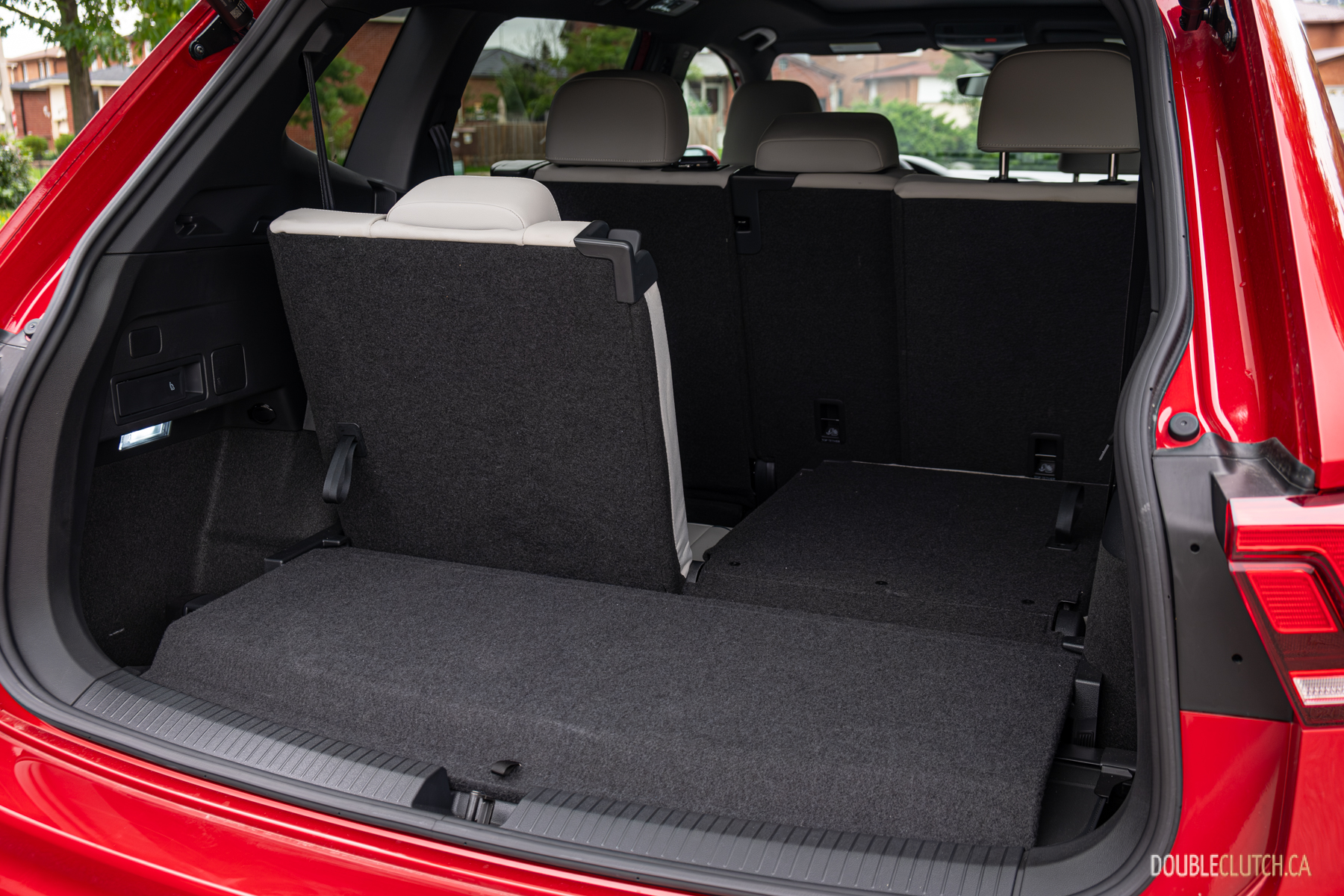
Our tester also featured the optional $800 third row, which adds a pair of seats way back there that are barely any bigger than a 911’s back seats. It also comes at the expense of cargo volume, due to the raised floor. It’s not a bad option to have in a pinch, but none of your third-row passengers would like you much after a long road trip. It’s nice that they fold completely flat so that your cargo space isn’t compromised too much when the seats are stowed, but if I regularly needed a third row and didn’t want to step up to something bigger, I’d look at a Kia Sorento.
The Tiguan is a popular choice in its segment, clearly evidenced by the sea of Tiguans I saw during my road trip to Michigan with it. Yes, the R-Line is only a cosmetic package and sadly, we don’t get the real Tiguan R as Europe does. But the $46,590 as-tested price tag makes the 2024 Volkswagen Tiguan R-Line a solid value in this space, and will certainly look the part for years to come. Although I can’t help but wonder what the real Tiguan R is like.


